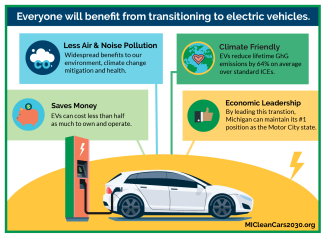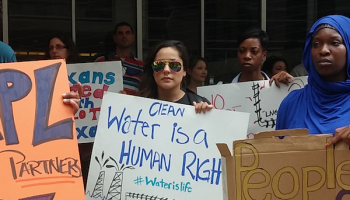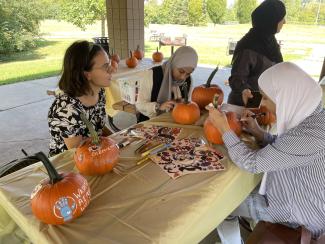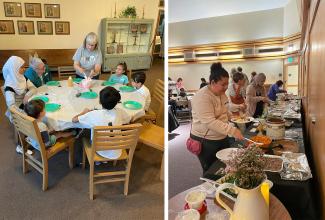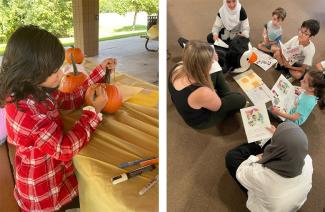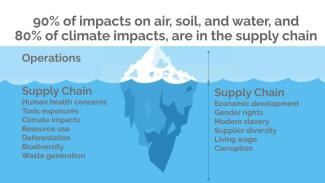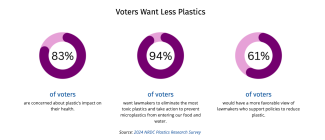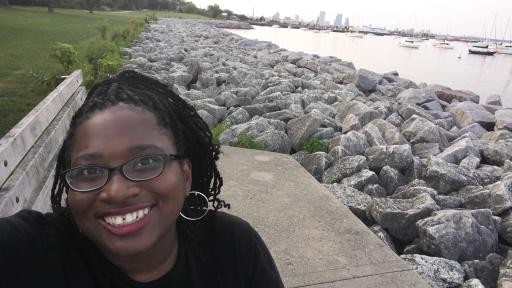Salam Beydoun, Environmental Justice Organizer at the Ecology Center, brings a unique perspective to environmental justice and equity, shaped by her heritage and experiences growing up in Dearborn, MI. With roots in Southern Lebanon, Salam’s journey portrays an unwavering commitment to justice, community, and environmental advocacy. Her path, which includes an educational background in Philosophy, Sociology, and Social Work from Wayne State University, led her to focus on environmental justice, particularly in the Detroit and Dearborn areas.
Drawing from personal experiences and daily challenges faced by her community, Salam is passionate about addressing the intersections of injustice. Her work emphasizes air quality advocacy within Southeast Michigan, aiming to connect the dots between air pollution and other critical issues affecting our cities, like affordable housing, food insecurity, and poverty. In her role at Ecology Center, Salam is dedicated to empowering residents and community members to speak out about injustice, ensuring their voices are heard and their needs addressed.
Since joining the Ecology Center in 2023, Salam has been instrumental in coordinating community education initiatives, such as DIY Box Fan Air Filter workshops, to combat poor air quality exacerbated by factors such as industrial pollution and wildfire smoke. She also played a key role in the newly launched Clear the Air coalition, organizing events for Air Quality Awareness Week 2024 and pushing for legislative policies to protect vulnerable and unproportionally-impacted communities.
We had the opportunity to speak with Salam about her journey, her work at the Ecology Center, and her vision for a just and equitable future for all communities.
(This interview has been edited for clarity and length.)
Tell us a little bit about yourself – where are you from? What did you do for fun as a kid? What did you study in school? What specific life experiences, interests, or ambitions led you on that path?
I grew up in Dearborn, MI, both of my grandfathers were immigrants from Southern Lebanon who came in the late 60s/early 70s and worked for Ford. As a kid I loved playing outside, doing somersaults in the front yard of my parents’ home. I grew up playing football with my dad and brother, joined a basketball league when I was eight and a volleyball team when I was ten and continued playing those sports up until high school. Moving my body has always been an essential part of my life and continues even now as I practice and teach yoga.
I went to Wayne State for both my undergraduate and graduate degrees. I studied Philosophy and Sociology in undergrad, with the initial goal of becoming a lawyer. I have always been drawn to helping people, and the profession fits my parents’ approval of acceptable careers. After graduating with my Bachelor of Arts in 2019, I realized that it wasn’t the right avenue for me. This led me down a path of trying to decide what to do with a degree that didn’t mean much to most employers, while still trying to feel that I was doing my part in advocating for justice and vulnerable people. During the George Floyd and BLM protests in combination with the #SaveSheikhJarrah in Palestine campaign during the summer of 2020, I felt drawn to the organizing that went behind these powerful movements. I eventually found myself applying to Wayne State’s School of Social Work after learning that there was a tract designed to train social workers, like myself, to become community leaders and organizers. During the program, my personal focus became environmental justice, especially in Detroit and Dearborn, knowing that it’s a crucial point where almost all injustices meet.
I don’t think any one specific instance led me to this point – rather, a conglomeration of all my experiences and the identities I hold. Being a second-generation Lebanese Muslim woman growing up in Dearborn, I was surrounded by others with a similar background as myself. The majority of my friends and I are from families displaced by war and occupational forces causing instability in our Southern villages, so I grew up hearing stories about discrimination for our religious background and race from those around me. This strengthened my internal pull towards wanting to know more about the systems that perpetuate it. Even in religion, our duties as Muslims are to be advocates for justice when we witness oppression or injustice, as we are meant to be protectors of the environment and one another. “In Islam, love is not just a feeling, but a responsibility; to care for, support, and uplift one another in goodness and righteousness,” @Soul.Guider on Instagram. All of this and more brought me to this point, and while I can’t do it all, I know that I’m doing my part to bring about change and justice, acting in alignment with my value system.
You joined the Ecology Center in 2023 as an Environmental Justice Organizer, a new position at our organization. Can you tell us your hopes for this position and the work you’ll do in this position?
I’m excited to be doing work with the Ecology Center! I feel fortunate to be part of this organization and to do Air Quality advocacy and organizing within Dearborn and Detroit. Through my position, I hope to be able to draw connections to the intersections of injustice many people within Southeast Michigan face. Through air quality, we can see the negative effects on communities also facing a lack of affordable housing, food insecurity, poverty, unreliable public transportation, and so much more. Ultimately, I’d like to have a network of organizers and organizations who are willing to connect our issues and empower residents and community members to be advocates for their own change. Using my social work background, it’s necessary to emphasize the needs of the community first, and I hope we can work together to identify those issues and work towards a more just and equitable future.
In the meantime, much of my work involves community education around air quality issues, especially with regard to the wildfire smoke that impacted us last summer. We only anticipate this to continue and find it necessary to provide affordable and accessible ways to mitigate it. There are plans to host DIY Box Fan Filter workshops throughout the summer to supplement the education and resources. These workshops will be co-hosted with partner organizations throughout Detroit with the intent of showing residents and community members how simple it is to assemble their own indoor air purifier with materials found at any supply store. It’s important and necessary to make this type of health impact easily accessible.
As a native of Dearborn, which has historically experienced poor air quality due to the extensive industrial properties in Dearborn, Melvindale, and Detroit, what does EJ advocacy work mean to you?
Admittedly, I grew up in the better part of Dearborn, not so close to industry (like the Ford Rouge Plant or Cleveland Cliffs Steel Plant) affecting the air quality around me. I did have several family members work for these industries, however, and saw the negative health impact for those who were exposed to it daily, causing cancers and respiratory issues. Environmental Justice advocacy means understanding my privilege of not having lived in areas that would have negatively impacted my own health AND knowing my responsibility to be an advocate for those who are impacted. The communities living in the shadow of these polluting industries are majority Black, Latinx, and Arab, and so many within these communities are immigrants who may not have access to the language or resources to advocate on behalf of themselves. It’s our duty to tap into these communities and really understand the harms that are being done and ask them what they need in order to live with the right to breathe clean air.
The Clear the Air coalition launched in May during AQ awareness week. What did the week look like?
Through the new Clear the Air coalition, I coordinated a week of events for Air Quality Awareness Week, which was May 6 –10 this year. The week was in coordination with other members of the coalition and partner organizations. We had film showings about air quality and pollution in Detroit and Dearborn, showing the industries contributing to the harm of residents who live around them. There was also a panel discussion on Tuesday, May 7th hosting coalition members, community leaders, and health researchers talking about the need for cumulative impact policy on a local and state level – the purpose of the coalition is to educate communities about it and push these policies forward. We had a DIY Box Fan Filter workshop with parents in Southwest Detroit, educating them on how to use these in their homes to mitigate poor indoor air quality, especially as the summer and wildfire smoke season approached us. A press conference in Dearborn’s Southend was also held to emphasize the close proximity of the steel plant to the elementary and middle school, impacting the health of everyone who lives and goes to school nearby. The DIY Box Fan Filter workshop and press conference were among a full week of events through SE Michigan.
Air Quality Awareness Week was educational, allowing residents and community members to learn more about what cumulative impact policies are and what it means for their health. We provided resources for folks to learn about how to mitigate poor air quality days and how poor air impacts our lungs, and who is most susceptible to its impacts. Air Quality Awareness week provided folks with an opportunity to learn about who is in their community and to build relationships in the fight for our right to clean air.
You also teach yoga. How does that teaching inform your work at the Ecology Center?
I have been practicing yoga sporadically over the last 10 years, and more seriously through the last 4 years. Yoga has been a grounding force as I pushed through grad school, helping me maintain a healthy balance between self care and community care. Feeling so grateful to have learned a way to recenter and ground myself, it was only natural that I pursued my yoga teaching certification so that I could share this knowledge with others who might also benefit from the healing nature of the practice. Teaching yoga is a selfless service, the focus always on the student and showing up for themselves. I’m a mere guide on their journey to self-discovery and self-determination.
So many of the tools I have learned through teaching transfers over into my work with the community, with an emphasis on meeting people where they are. Yoga is a practice meant to honor our bodies and to be patient as we learn to tap into the mind-body connection. When working with others and organizing, I have learned to reflect on this principle when considering the life experiences of those I have the privilege of working with by leading my work with openness and curiosity, while leaving assumptions at the door. I’ve learned to apply it to myself as I started this position a year ago. I have had to learn to be patient with myself, giving myself grace to take time to learn the skill sets I need and make the connections necessary to do the work. Above all, yoga encourages me to be intentional and present, encouraging balance on and off the mat. This work can require a lot out of us because there’s always something to do, it’s nice to have that gentle reminder to come back to myself and recenter. As Audre Lorde has said, “Caring for myself is not self-indulgence, it is self-preservation, and that is an act of political warfare.” We must fill our own cups before pouring into others to sustain ourselves in this very demanding work.
